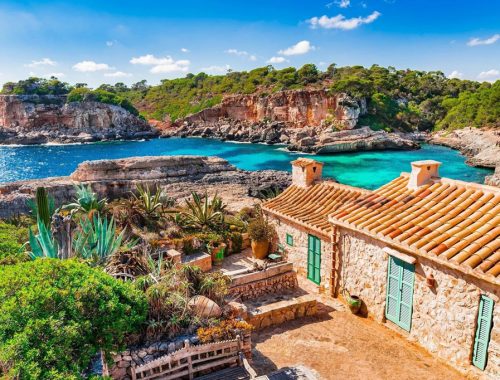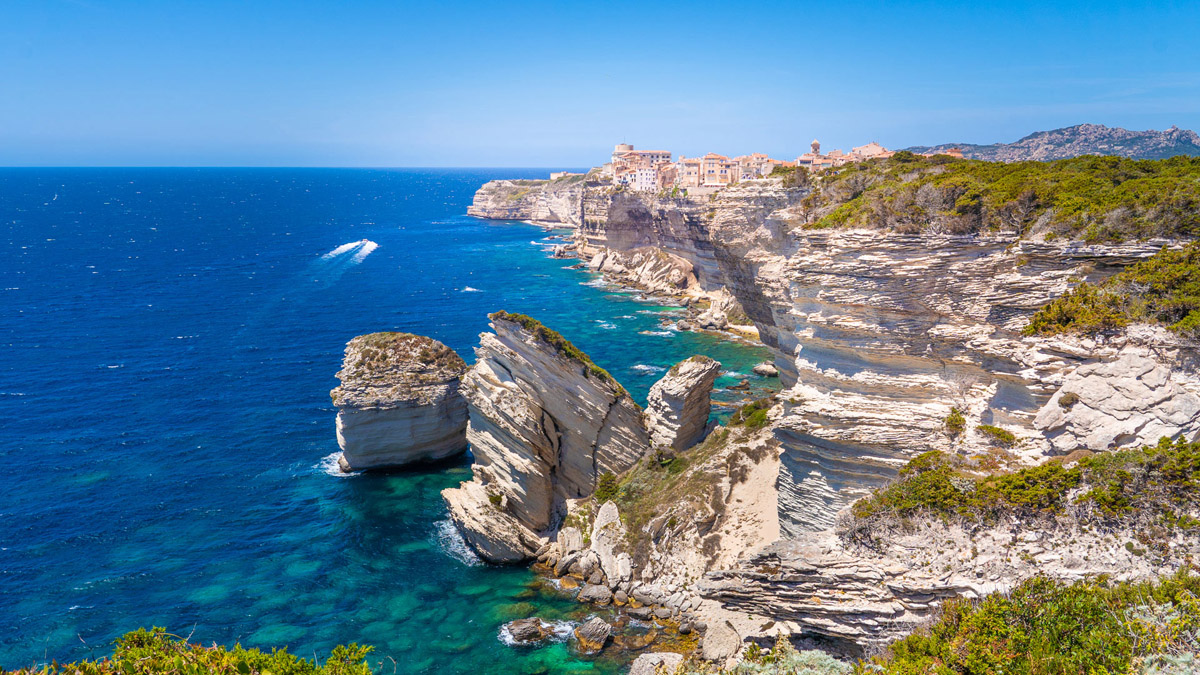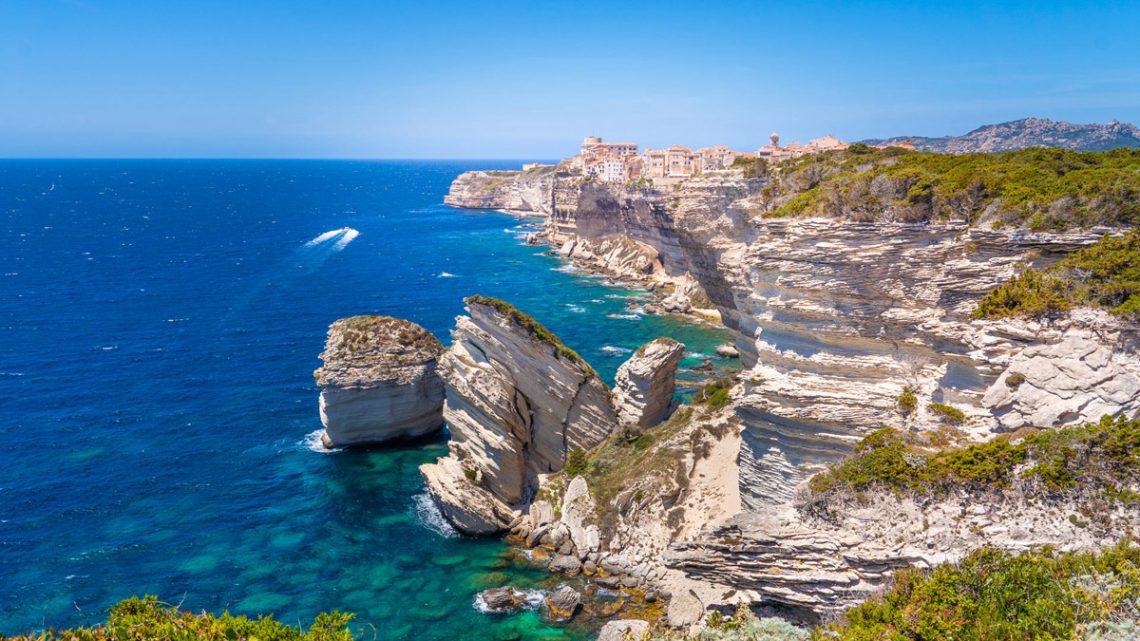
From Sardinia to Southern Corsica, the coast between the sky and sea
This is a seven-stage itinerary to discover Southern Corsica by sailing between cliffs overlooking the sea, authentic islands such as Lavezzi and Cavallo, splendid beaches, historic villages such as Bonifacio and Porto Vecchio, all through the natural reserve of the Strait of Bonifacio with stops in the fabulous La Maddalena and Caprera.
Southern Corsica is rightly considered one of the most beautiful places in the Mediterranean, where pristine islands, historic villages and splendid coves overlooking a sea of a thousand shades of blue and green await us. With a navigation of about 95 miles divided into 7 stages, before reaching Corsica we will cross the magical Maddalena Archipelago, a unique nature reserve in the world and the majestic Strait of Bonifacio where the cool Mistral will fill our sails.
Day 1: Cannigione (boarding)
Cannigione, located in the Gulf of Arzachena in the north of Sardinia, is the starting point where the boat awaits you for this one-week itinerary. We will take advantage of this first day of vacation to get on board, greet our travel companions, relax after the trip and arrange the luggage. The wild beauty of Gallura and the chic atmosphere of this area of Sardinia are ideal for getting into the right mood of the holiday.
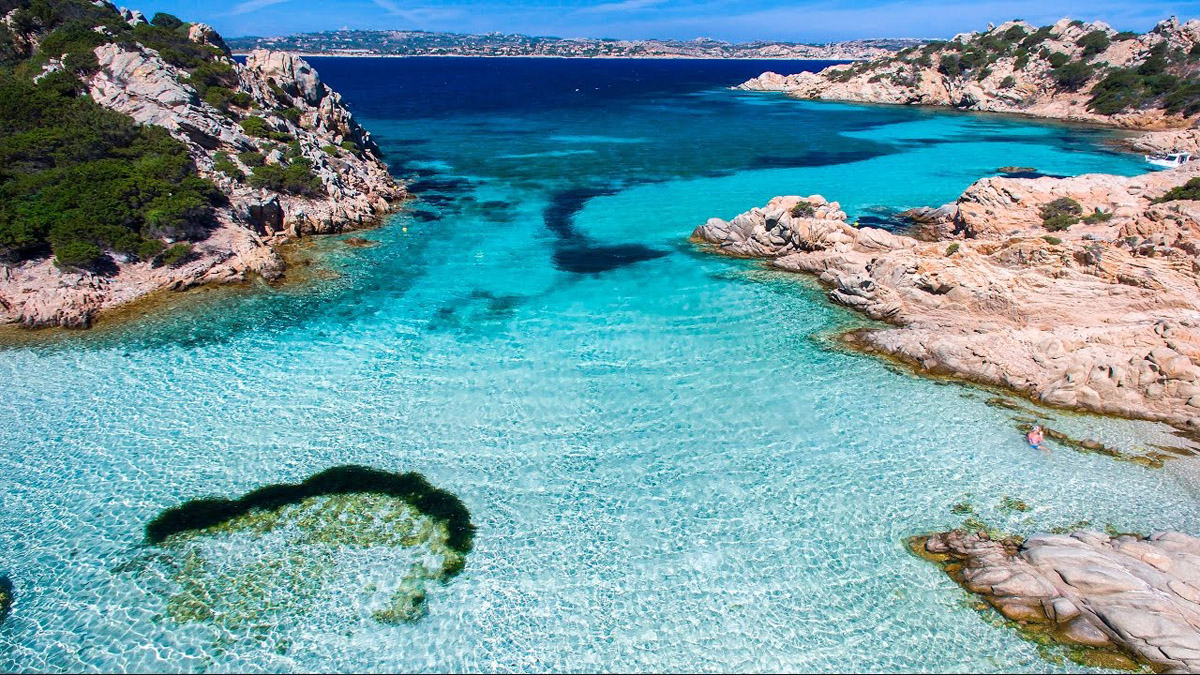
Day 2: Cannigione-La Maddalena-Lavezzi (17 miles)
One hour of sailing is enough to cover the first 7 miles and reach La Maddalena, the largest island of the homonymous national park. In order to enjoy the beauties of the historic center, the ideal is to dock in Cala Gavetta on the south coast which offers 140 berths and depths of up to 12 m. In the mooring you just have to be careful of the transit of ferries sailing in front of the port entrance. Alternatively there is Cala Mangiavolpe, a more peaceful place to moor, but it is also nice to stop at anchor in the bays of S. Stefano, Mezzo Schifo or in the delightful inlet of Cala Francese.
By renting a bike or a moped, you can visit the beautiful Cala di Spalmatore on the north-east coast or the deep fjord of Stagno Torto on the northern end or the Strangolato isthmus, with its white dunes surrounded by rocks sculpted by the Mistral. A visit should pe paid also to the beaches of Bassa Trinita, Cala Lunga and Monti d’Arena, as well as Abbatoggia, Cala d’Inferno, the Costone, the Eagle’s Nest (Nido d’aquila), Punta Nera and the famous Octopus Head (Testa del Polpo).
The historic center of the island is also rich in charm, with its cobbled alleys and Corso Garibaldi, filled with the eighteenth-century buildings, churches, restaurants and craft shops. The promenade is also beautiful with its market, the small gardens, filled with busy fishermen and the Admiralty building from which you can see the small island of Santo Stefano.
Time to resume the cruise. Having passed the passage between the wonderful island of Budelli (that of the pink beach) on the right and Spargi on the left, you enter the mythical Strait of Bonifacio, one of the most spectacular places in the Mediterranean. We will have a nice sailing ride of a couple of hours to cover the 10 miles that separate us from another thrilling stop: Lavezzi. Corsica welcomes us with this archipelago of which “Lavezzu”, as the Corsicans call it, is the largest island. For the moorings there are Cala di Giunco or Cala del Leone. Many boaters also choose Cala Lazarina in the South West of the island. The important thing for all is to study the nautical charts before entering because the coasts are indrawn. The cemetery where the crew of the French Semillante frigate is buried, which sank on the rocks of this island in 1855, testifies to the danger of this stretch of coast.
Once moored, the program is simple: diving, walking and “dolce far niente” – the joy of doing nothing. The extraordinary aspect of Lavezzi is its complex of rocks shaped by the Mistral. The island is uninhabited and its incredibly turquoise waters are calling to be enjoyed. For example famous Mérouville that has a seabed with a depth of 20 to 35 m is a joy to visit with a mask and snorkel.
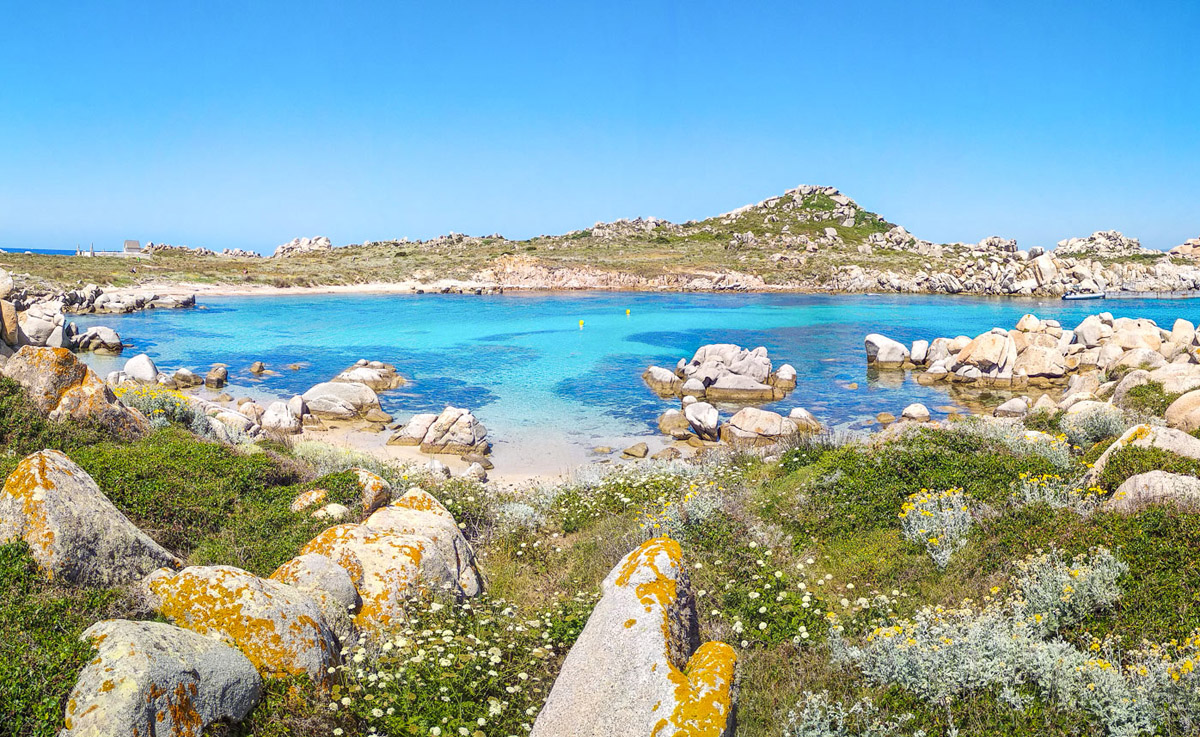
Day 3: Lavezzi-Bonifacio (6 miles)
Early in the morning, we’re off. The famous Capo Pertusato with its lighthouse nestled between the cliffs announces our arrival in Bonifacio. When it appears on the horizon, there are just 2 more miles to go, just enough time to call the port authority via radio and book a berth. Entering the port does not pose any particular problems, even at sunset, unless there is a strong wind from the South West, North West or East. The entrance to the gulf of the same name can be recognized by the lighthouse of the Madonneta and the tipping point of Timon. Here you can anchor at Calanque d’Aranella on a depth of 1 m or at Calanque de La Catena on a depth of 3-6 m.
Arriving from the sea in Bonifacio allows you to fully enjoy the charm of this ancient fishing village perched on a fjord of incredible beauty overlooking the Strait of Bonifacio. Its ancient history is vitnessed by the churches, monuments and dozens of buildings erected by Genoese, Spanish and French. The ideal is to go through the Porte de Genes in the medieval center, divided into the Upper Town and the Old Town and characterized by winding streets, squares and countless. You will also be amazed by the Bastion de l’Etendard, a fortress close to the port, as well as the staircase of the King of Aragon, consisting of 189 steps carved by hand into the rock, that leads to the sea. The windmills in the Bosco area dating back to the 12th century, the Gothic convent of San Francesco and the Marine Cemetery are also worth to visit. Finally, pleasant and interesting excursions can be made to the Faro della Madonnetta and the Sdragonato Caves.
But the highlight of Bonifacio are the delightful bays and coves scattered among the cliffs, starting with Sutta Rocca, CalaLonga, the Tonnara and Cala Paragnano. In all of them, sensational sceneries, very fine sand and turquoise waters are awaiting you, ideal for long baths and dives.
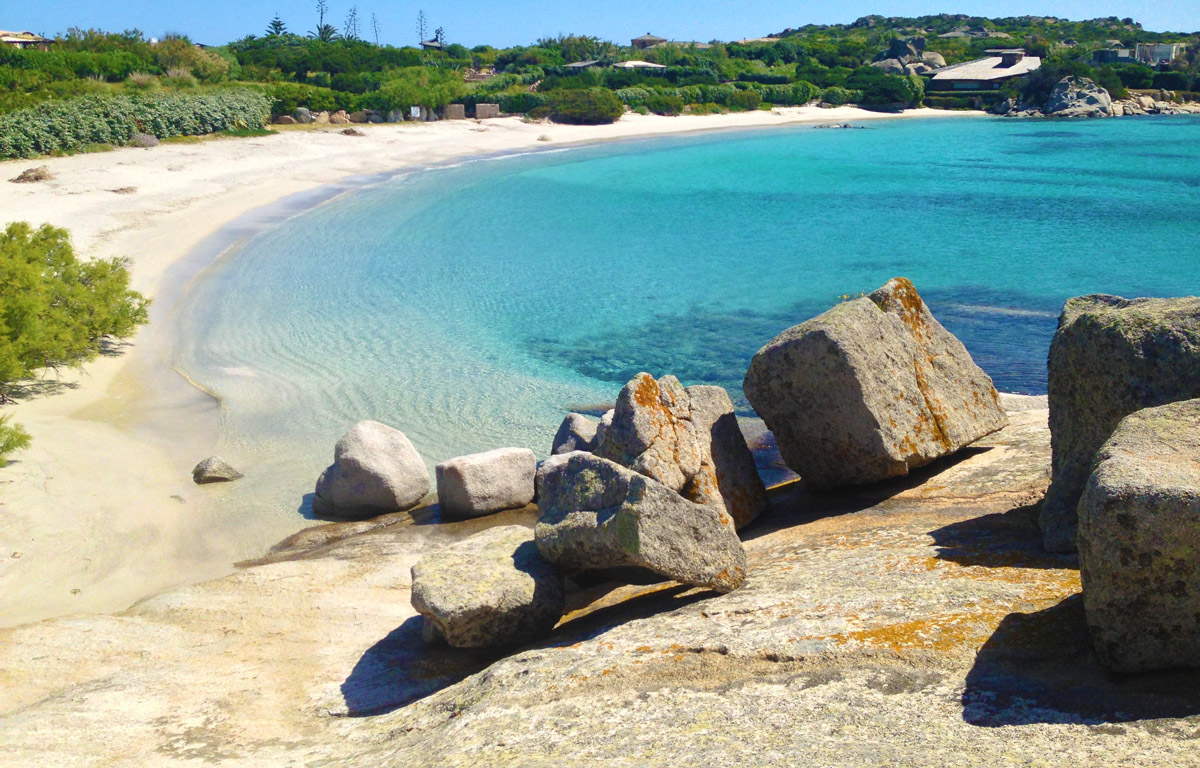
Day 4: Bonifacio-Island Cavallo (7 miles)
In the morning we leave the port and go towards the east sailing under the spectacle of the white cliffs and passing on the left the beaches of Saint Antoine, Capu Testagru, up to Capo dello Sperone and the small island Piana, before turning south to reach the fourth stage of our cruise: the island of Cavallo, a magical place with an opiate nature, intense light and the turquoise sea. To access the island, you can moor in the south-west oriented port consisting of three docks with some piers. The ideal is to approach from the south, following the channel bordered by 4 red and green buoys. The seabed is sandy and varies from 1.20 to 3 m. To stop at the anchor you can choose the bay of Cala Zeri, one of the wildest beaches of Cavallo with luxuriant vegetation that embraces the beach, the scope of crystalline water and a small pier.
With a history of 2,000 years, the island of Cavallo was the island where the ancient Romans extracted the granite with which to beautify the patrician houses. Today it is a private island and is part of the Bocche di Bonifacio nature reserve: only electric cars and bicycles circulate on its roads for those who want to admire the wonderful beaches, the romantic views and the numerous villas designed by the famous French architect Jacques Couelle for the international jet set. The name of the island derives from the type of fish with a horsetail shape typical of these waters, also rich in anchovies, moray eels, sea bass, dolphins and swordfish.
Among the beaches that will make you dream is La Double, a beautiful stretch of golden sand famous for its beautiful sunsets and the particular “Santa Lucia” shells found along the shore. But also Cala Greco, in the most remote area of the island and the bay of Palma, the largest beach where the thin and white sand blends with the waters of a thousand shades.
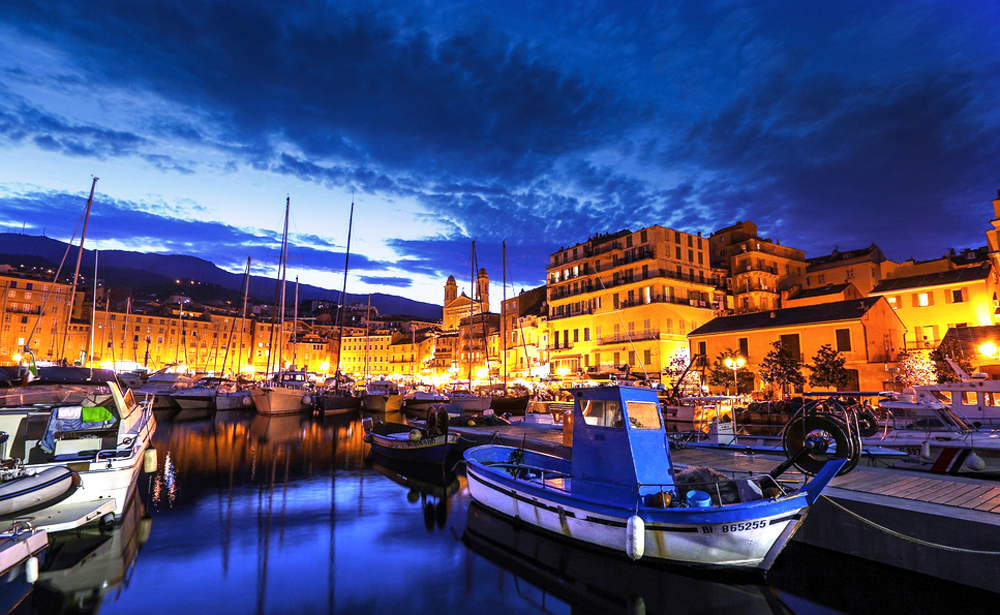
Day 5: Island Cavallo-Porto Vecchio (20 miles)
On the fourth day of our cruise we will wake up early to make the most of the day and make a nice navigation along the South West coast of Corsica. After having passed Capo di U Capicciolu, the delightful Gulf of Santa Manza opens on our left, ideal for having lunch in the harbor, taking a swim or a walk on the Maori beach. Continuing to go up this rocky coast after a few miles we will arrive in the beautiful Bay of Rondinara, a shell-shaped beach that overlooks a turquoise sea considered the most beautiful in Corsica. We then continue towards the north and we will cross the beach of Porto Novo, that of Santa Giulia and Palombaggia surrounded by a verdant pine forest, until we see the lighthouse of Punta Chiappa which will signal us that our destination is close: Old Port. To reach the tourist port, you need to go into the innermost part of the gulf, paying attention not only to the ferries, but also to the Chiappino rock, the rocky platform of Punta di Benedetto and the rocks at the entrance to the marina, however well marked by buoys.
Once moored, you can set out to discover this magnificent town which on the one hand still retains a rural and almost mountain character and on the other offers the atmosphere of a renowned and glamorous tourist resort thanks to its refined historic center and elegant shops. For this area characteristic are the stone houses and the narrow alleys decorated with beautiful pavements, as well as the remains of the ancient walls, the churches and the famous bastions dating back to 1539 of which the most famous is the Bastion de France. Equally impressive is the area of the marina, where most of the trendy clubs, the boutiques of the big names and the best restaurants in Porto Vecchio are concentrated.
Before the aperitif, you can take a swim on the Cala Rossa beach which offers a magnificent view of the Benedettu peninsula and the Gulf of Porto Vecchio or on the beach of Saint Cyprien.
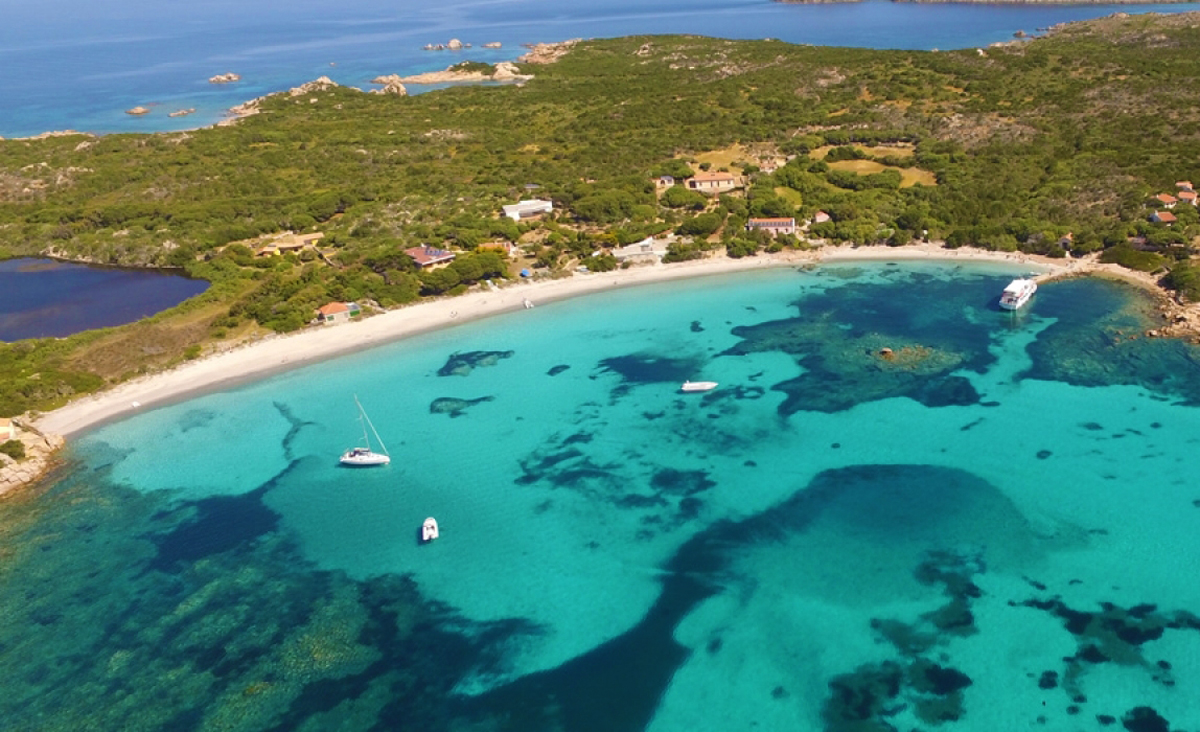
Day 6: Porto Vecchio-Santa Maria (25 miles)
The following day we leave for a sail of about 3.5 hours, the longest of our cruise, which allows us to go back down the South East coast of Corsica, cross the Strait of Bonifacio and arrive at the sixth stage: the beautiful island of Santa Maria, one of the northernmost points of Sardinia separated from the island of Razzoli by a narrow stretch of sea called the Passo degli Asinelli. The only mooring place for disembarking on the island is Cala Lunga, whose entrance has shoal in the center: you enter by going right or left. The rocky and sandy bottoms reach 4.5 m, while the traverse wind is the Ponente. We can than enjoy the enchanting bay that stands out for its crystal clear water and over 200 m of white sand surrounded by pink rocks with verdant vegetation. Behind the beach is the Padule, a small lagoon where ducks and woodcocks nest, and a path that reaches the Punta Filetto lighthouse from which you can enjoy a splendid view of the entire archipelago and the Strait of Bonifacio. Not far from Cala di Santa Maria there are also the ruins of the Benedictine convent built by the friars together with a small church dedicated to the Virgin Mary. The name of the island is due to the Benedictine monks who were among the first settlers of the archipelago in the thirteenth century.
On the north of the island it is worth visiting the beach of Cala Muro, made up of pebbles and rocks and framed by a harsh row of light-colored rock and dry stone walls, while if you go to the west you can reach Cala Drappo, a crescent shaped beach of light sand and stones washed by a sea of splendid colors – between electric blue and emerald green. To the south of the island there is Cala di Fosso one of the most beautiful and extensive beaches of the Archipelago.
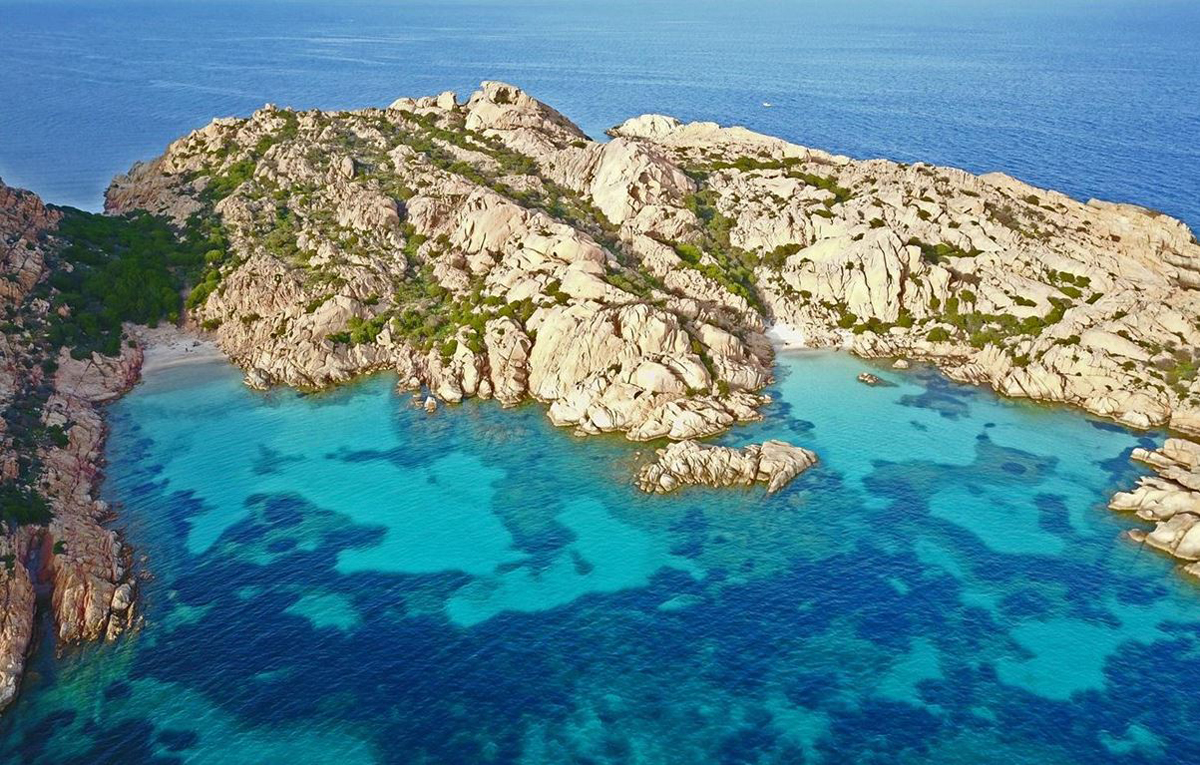
Day 7: Santa Maria-Caprera-Cannigione (15 miles)
Leaving this oasis of peace and nature, we leave for the last part of the journey: the island of Caprera. It takes only 8 miles traveled in just over an hour of navigation to reach one of the most enchanting places in the Mediterranean. To disembark we will take advantage of the shelter of Cala Coticcio, also known as “Tahiti” for the beauty of the place. It is located in the center of the east coast and consists of two small bays that offer sandy bottoms and rocks from 1.5 to 10 m. Once the mooring is complete, you can enjoy the magical scenery that surrounds us. Caprera is an authentic reserve and famous for its pristine beaches, large pine forests and for being the last home of Giuseppe Garibaldi. With a short walk you can reach his house museum open to the public or you can visit some wonderful and wild coves, such as the beach of the Relitto, Cala Brigantina, Cala Garibaldi, Cala Napoletana and Due Mari.
Back on board, all that remains is to sail for the last 7 miles to be completed in an hour and reach the Cannigione base again where we will spend the last night before disembarking admiring this vacation and with a great desire to return one day to these dream places.
You May Also Like
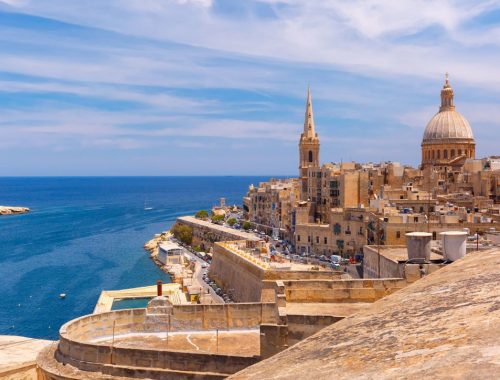
Sailing in Malta: The 5 best anchorages to escape to in autumn
30/11/2023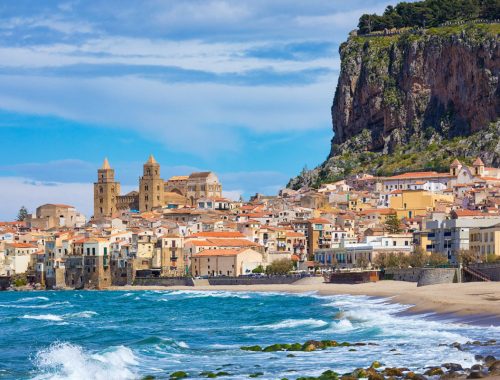
Cefalù: Here’s why sailors adore this splendid Sicilian stopover
12/12/2025